In the present days the price and usage of petroleum products are increased more and more, due to this the search of alternative fuels has gain more importance in order to replace it. Coming to the diesel engines the best alternative fuel is Biodiesel, because it can be used directly without changing the engine modifications. The methyl esters of vegetable oil are known as Biodiesel. That means the fatty acids present in the vegetable oil are mainly responsible for the production of Biodiesel. The methyl esters of palm oil can be derived through Transesterification process. Experiments have carried out to examine the properties of palm oil biodiesel, performance and emissions of the engine with different blends (20%PBD, 40%PBD, 80%PBD, and 100% PBD) at different fuel injection pressures (190, 210, and 230bar) and the results obtained are compared with diesel (base line test values). A “computerized variable compression ratio multi fuel direct injection water cooled engine” is used for the performance analysis. The main parameters considered for the performance analysis were Brake power and Brake thermal efficiency. Indus Six Gas Smoke analyzer and Smoke Meter were used for Emission analysis. The parameters considered for the emissions analysis were percentages of Carbon monoxide (CO) and Nitrogen oxides (NOx), because those are the very dangerous gases.
Keywords |
| POME, Transesterifiation, fuel injection pressures, Exhaust gas, Performance, PBD (palm oil biodiesel) |
INTRODUCTION |
| The concept of using vegetable oil as an engine fuel is developed by Rudolf Diesel (1858-
1913).First he done the experiment on peanut oil in 1900. Unfortunately Diesel was died in 1913 before his vision of a
vegetable oil powered engine. After that the petroleum companies introduced diesel as an engine fuel, because of its
best fuel properties it gain more importance than vegetable oils. But after 1970’s the usage and price of this diesel
becomes more and more hence every country want to replace it with an alternative fuel. Hence the research of fuel from
vegetable oils starts again [1-2]. The research is not only limited for vegetable oils, lot of researches were also
developed on producing the fuel from edible, non edible oils, animal fats and leaves etc. The fuel produced from these
sources is called as Biodiesel because Bio means “Nature” since it comes from the natural sources and used for the
running of the engine, hence it is called BIODIESEL. Vegetable oils also have the fuel properties such as density,
cetane number, calorific value, heat of vaporization etc. But straight vegetable oils cannot be used directly in the running of the engine because these have high viscosity, high density and low volatility. These properties of the oil may
cause poor atomization of fuel, sticking of piston ring, cold starting trouble etc. Hence the required properties of the
fuel for this oil can be enhanced through a process called “Transesterification” [3-4]. The main purpose of producing
biodiesel is, it produces fewer emissions compared to diesel and it is also a renewable source. Today many people
doing researches on the performance and emission of the engine with different oils such as Palm oil, Pongamia oil,
Jatropa oil, Neemseed oil, Fish oil etc. Recently one of the experiment is done with fish oil and its blends without
engine modifications , the results says that by using this; the performance of the engine (B.P, Brake thermal efficiency)
is slightly less compared to diesel. Coming to emissions it produces less HC, CO and SMOKE emissions compared to
diesel but, the NOx were increased [5]. Another experiment is done by using a HHO generator for the existing engines
to reduce pollution and to increase fuel efficiency. By using this they conclude that; the performance of the engine is
increased 30-40% than the previous [6]. Coming to Palm oil, there are many advantages are there by using palm oil for
the production of biodiesel. Because, Oil palm, an oleaginous tropical plant, has the highest oil productivity per unit of
land on earth. The yield of palm oil is 5000 kg/hectare, which is high compared to the yielding capacity of others oils.
Among other crops for producing fuel, palm oil demonstrates good competitiveness. Palm oil blended diesel has
emerged as an alternative fuel for an internal Combustion engine satisfying certain criteria, such as requiring minimum
engine modification, Offering uncompromised engine life and not being hazardous to human health and the
Environment during production, transportation, storage and utilization [7]. In order to increase the performance and
controlling the emissions, the engine modifications were done, the modifications effect on both performance and
emissions of the engine. [8] One of the modifications was changing the fuel injection pressure. Fuel injection pressure
is the common modification done on the engine to change the pressure of fuel injected into the combustion chamber. [9]
By changing the fuel injection pressure 240bar with linseed oil they get the good results. [10] |
PRODUTION OF BIODIESEL & CHECKING PROPERTIES |
| Palm oil is selected for the analysis. Palm oil is converted into Biodiesel through Transesterifiation. In
Transesterification reaction we mix palm oil with Methanol and heated to a temperature 60-700C, in the presence of a
base catalyst alcoholic KOH (potassium hydroxide). The ratio of proportions of palm oil, methanol, and base solution
are 10:5:3. After the reaction is completed we got two products, one is Biodiesel and other is Glycerin. Now we
separate Biodiesel from Glycerin by means of a separating funnel. After that the Biodiesel obtained is water washed
twice to get pure Biodiesel. The chemical reaction is represented as |
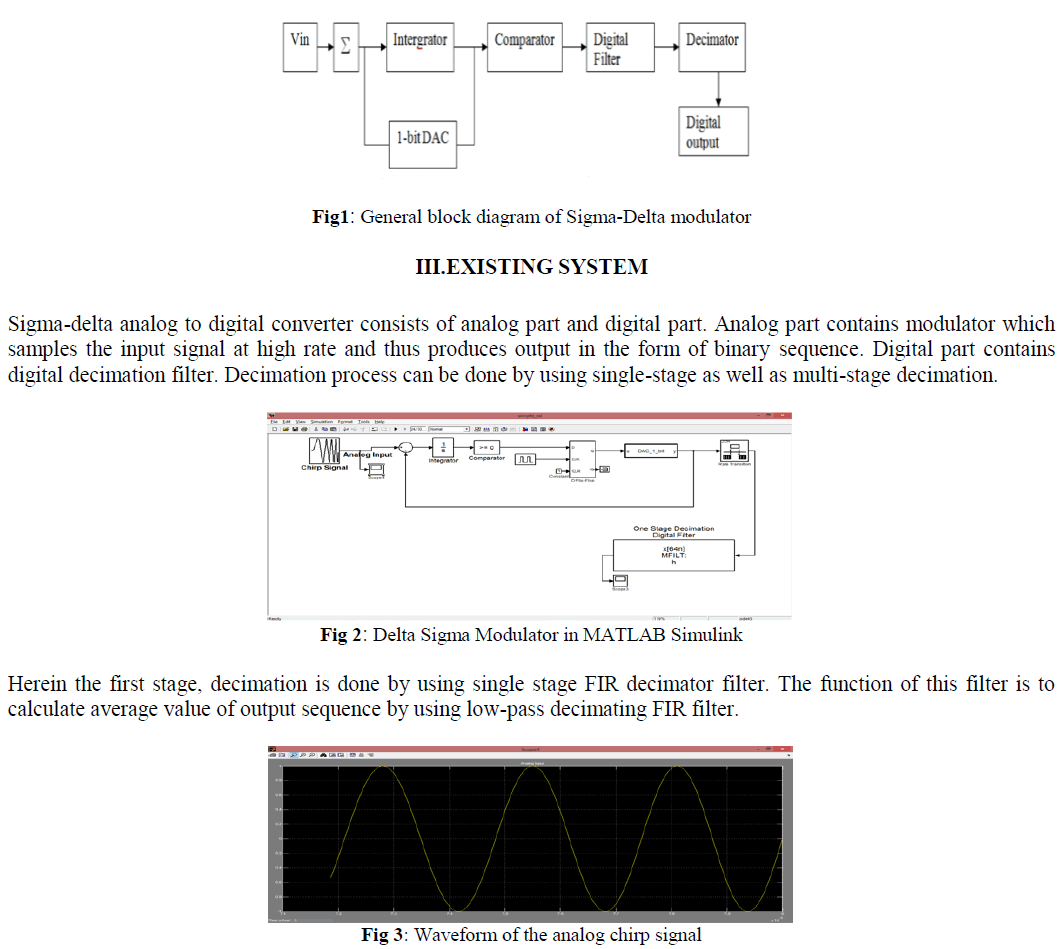 |
| Now the Biodiesel is checked for its fuel properties like Viscosity, Density, Flash and Fire point, acid
value, Cloud and Pour point. The viscosity was measured with Redwood viscometer (IS: 1448(P25)) at 400C. Flash and
Fire point were measured with Pensky Marten flash point apparatus (IS: 1448(P66)). The density was measured with
Hydrometer (IS: 1448(P16)). Acid value can be measured according to ASTM D974 by indicator titration method.
Cloud and Pour points were found by using a test tube ,thermometer rapid cloud and pour point tester (IS: 1448(P10)). |
PROPERTIES OF THE PALM OIL BIODIESEL |
 |
EXPERIMENTAL APPARATUS AND PROCEDURE |
| The analysis is done on the Computerized Variable Compression ratio multi fuel direct injection water cooled
engine. The experiment is done at constant compression ratio (16.5) of the engine. Initially we have done the base line
tests, which are with diesel at three fuel injection pressures 190, 210 and 230bar, and then experiment is repeated with
different ratios of palm oil biodiesel blends (20%PBD, 40%PBD, 80%PBD, and 100% PBD). For each blend the
experiment is repeated for different fuel injection pressures i.e.at 190bar, 210bar, 230bar. After that we compare the
values of performance and emissions obtained from each blend with the base line test values at the particular fuel
injection pressure. |
Engine specifications |
| Engine: 4 stroke computerized variable compression ratio multi fuel direct injection water cooled engine |
| Make: TECH-ED |
| Basic engine: Kirloskar |
| Rated power: 5 HP (DIESEL) |
| Rated power: Up to 3 HP (PETROL) |
| Bore diameter: 80mm |
| Stroke length: 110mm |
| Connecting rod length: 234mm |
| Swept volume: 551cc |
| Compression ratio: 5:1 to 20:1 |
| Rated speed: 1500 rpm |
| During the running of the engine the performance analysis is done with different blends at various loads and at a
particular fuel injection pressure. The emission analysis is done by using INDUS SIX GAS SMOKE ANALYZER &
SMOKE METER. The six gas analyzer gives the percentages of CO (carbon monoxide), NOx (Nitrogen oxides), Sox
(sulphur oxides), O2 (oxygen), CO2 (carbon dioxide), HC (Hydro carbons) and the smoke meter gives amount of
smoke coming from engine exhaust. |
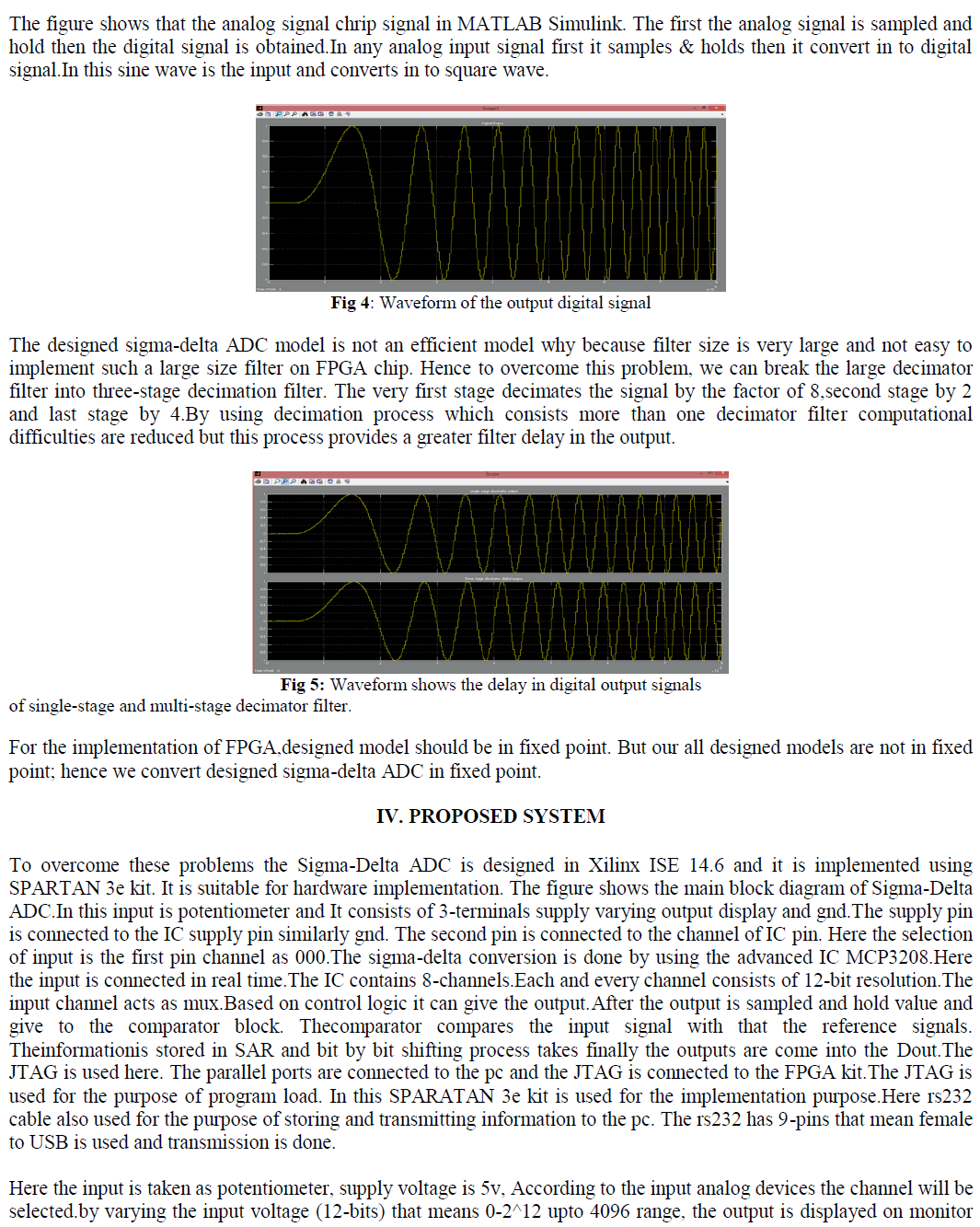 |
| FIGURE 3.1(1)WATER INLET TO THE CALORIMETER AND ENGINE (T1
0C),(2)WATER OUTLET FROM THE ENGINE
JACKET(T2
0C),(3)WATER OUTLET FROM CALORIMETER(T3
0C),(4)EXHAUST GAS INLET TO CALORIMETER(T4
0C)'(5)EXHAUST GAS
OUTLET FROM THE CALORIMETER(T5
0C),(6)ATMOSPHERIC AIR TEMPERATURE(T6
0C),(7)FUEL FLOW,(8)PRESSURE TRANSDUCER.
EGA: EXHAUST GAS ANALYER,SM : SMOKE METER,PC: PERSONAL COMPUTER |
RESULTS AND DISCUSSION |
| The analysis is done using palm oil biodiesel blends at different proportions and at different
fuel injection pressures, the results obtained is compared with the base line test values (diesel). |
Comparison of Break Power |
| The break power of all blends is compared with diesel at three fuel injection pressures separately |
At 210bar fuel injection pressure |
| The following figure 4.1.1 shows the break power of various blends at various loads. The brake power
increases with increase in load for all blends. The break power produced is almost same with all blends and diesel.
But with increasing the loads the blend 20% PBD gives best results than the diesel. |
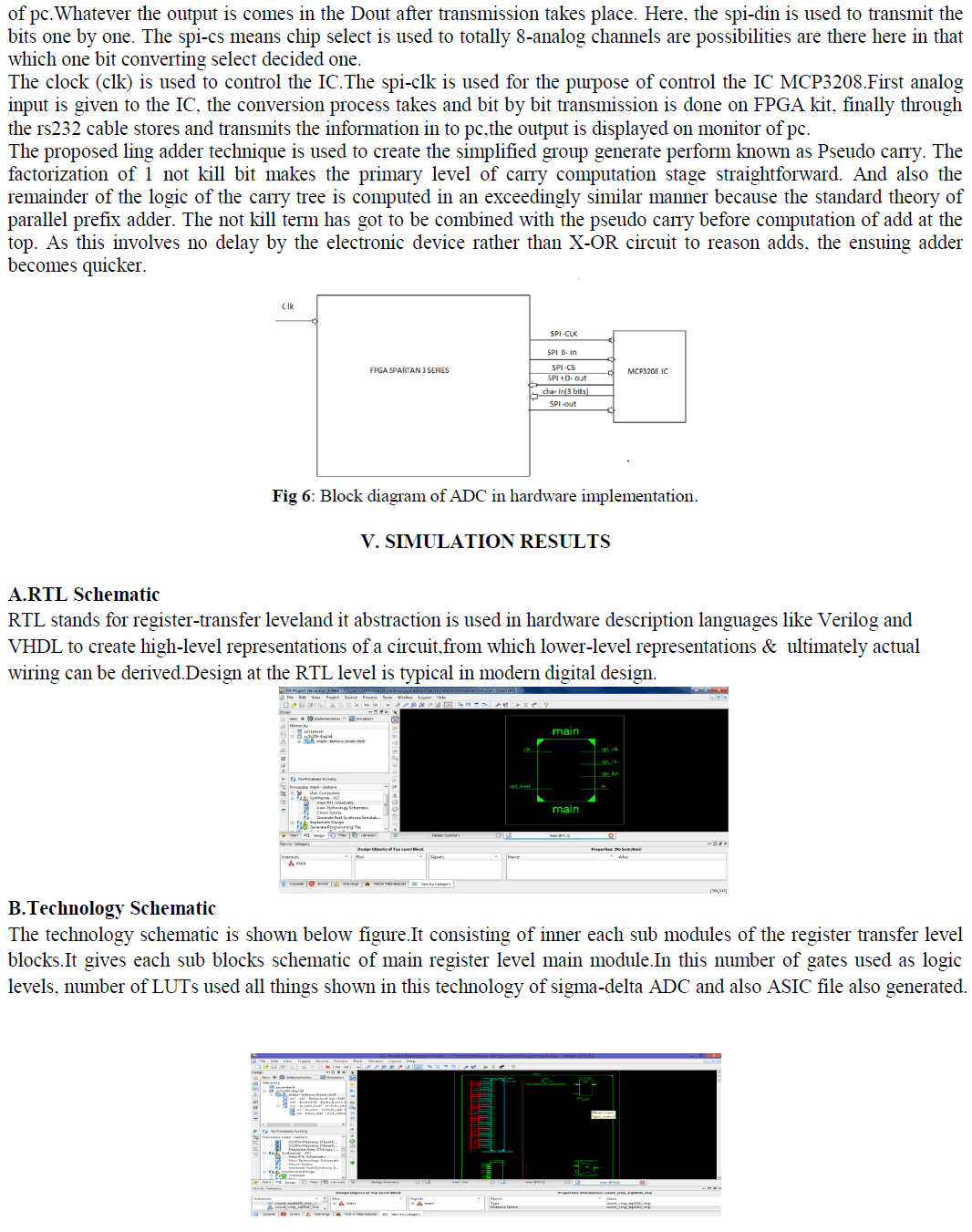 |
| Figure 4.1.1 B.P vs LOAD |
At 230bar fuel injection pressure |
| The figure 4.1.2 shows break power produced by various blends at various loads at a pressure of
230bar. Here also the brake power produced is almost same in all cases, but the 100%PBD gives the best results than
diesel at higher loads. |
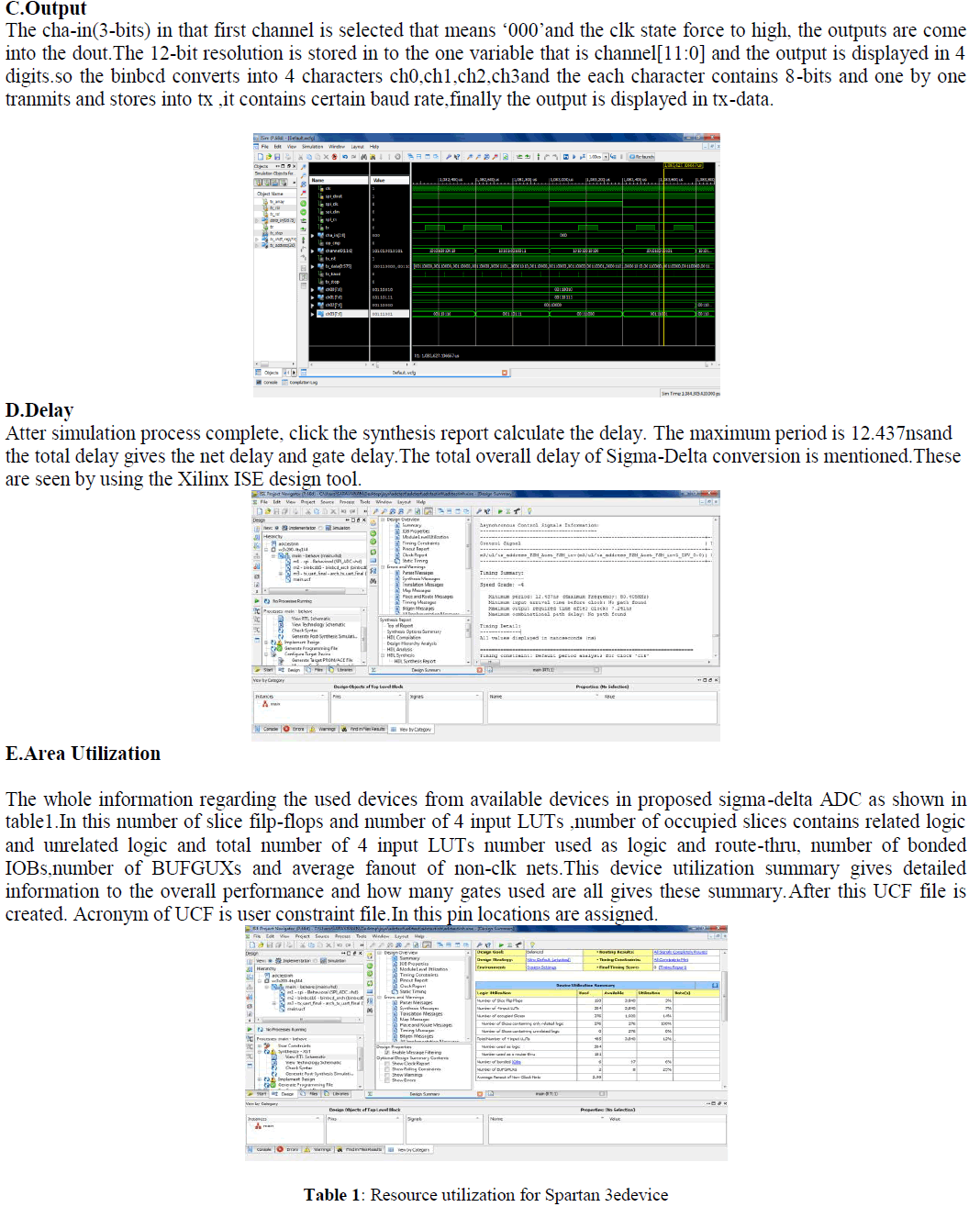 |
| Figure 4.1.2 B.P vs. LOAD |
At 190bar fuel injection pressure |
| Figure 4.1.3 shows the shows break power produced by various blends at various loads at pressure of
190bar. From the figure we can say that at 190bar diesel shows the best results compared to all blends at higher loads.
Coming to blends here 20% blend shows the best results at higher loads. |
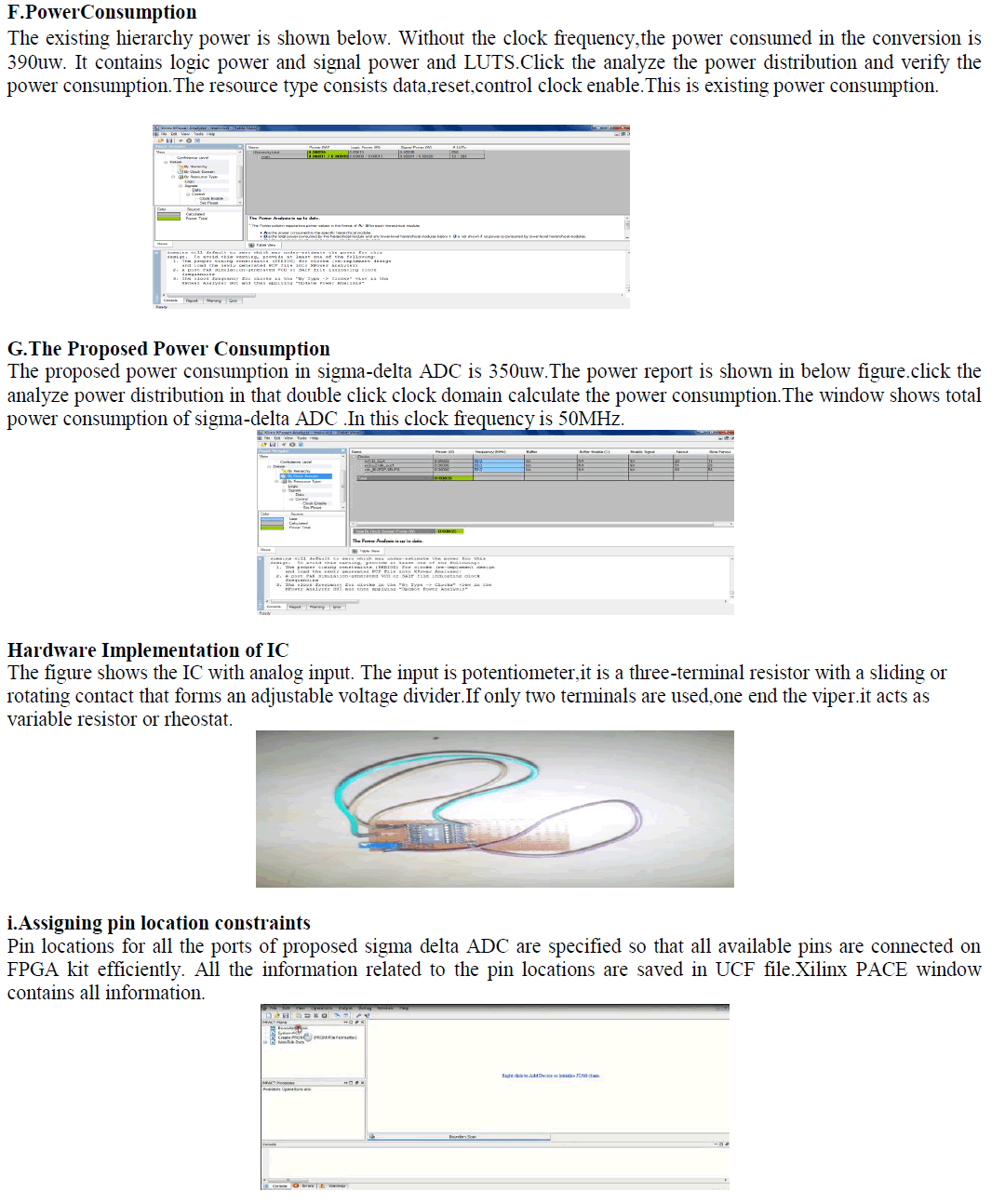 |
| Figure4.1.3 B.P vs. LOAD |
| From above analysis we can finally say the 20%PBD is best at 210 bar and 190bar fuel injection pressures and
100%PBD is best at 230bar fuel injection pressures in terms of performance. |
Emissions analysis: |
| The emission analysis is mainly concentrated on the percentages of Co and Nox,
because those are the dangerous gases. The emission analysis was done as follows. |
At 210bar fuel injection pressure |
| The figures below shows the emissions (CO and NOx) coming from the engine exhaust with
various blends at various loads and at a fuel injection pressure of 210 bar. From the figures 4.2.1.a and 4.2.1.b we can
say that CO emissions are low for 20%PBD when compared with other blends and diesel. |
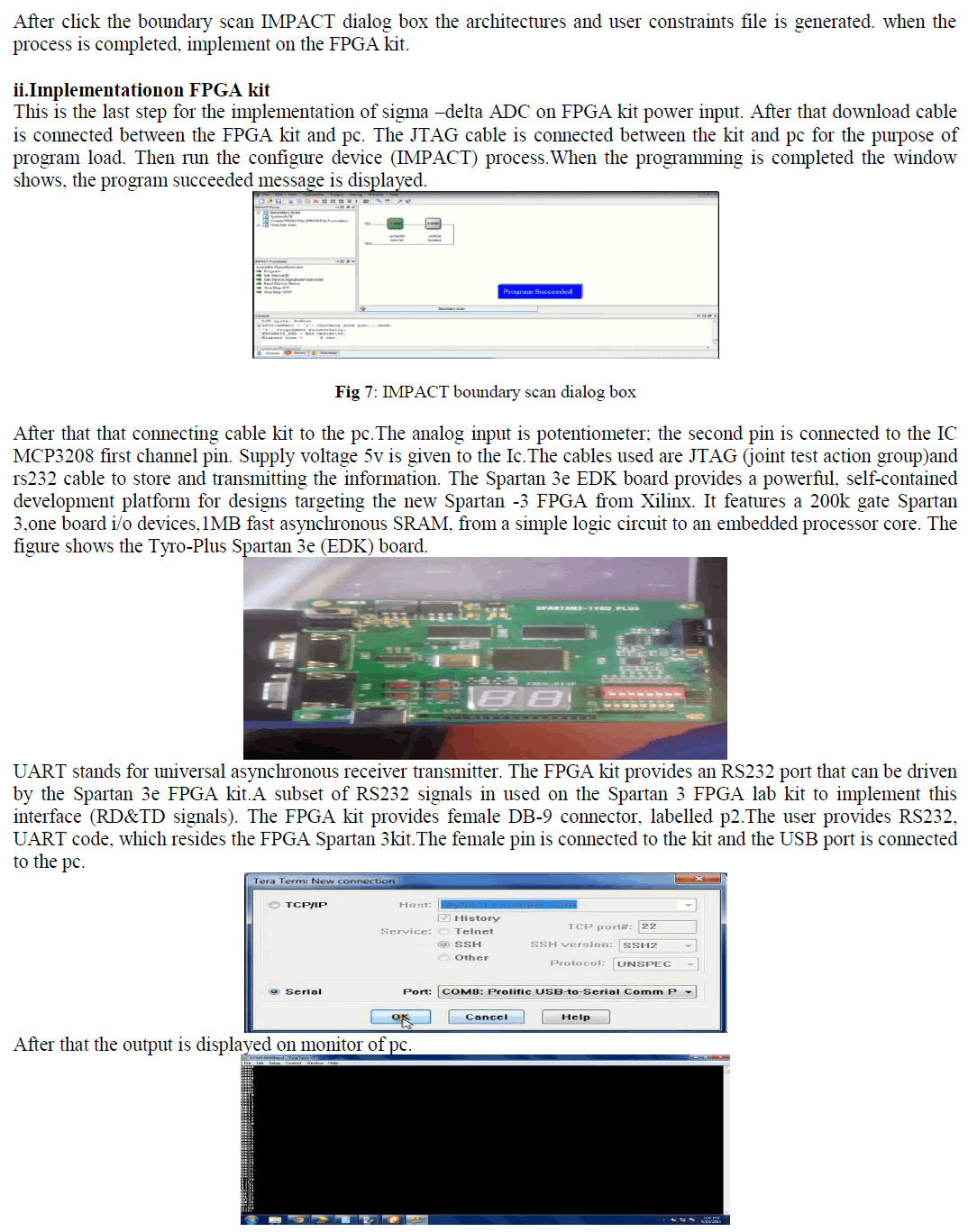 |
| Figure 4.2.1.a |
| Coming to NOx emissions 100%PBD, 80%PBD, 20%PBD are emitting less NOx compared to diesel. Finally (by
taking the average) 20%PBD at 210bar Fuel injection pressure gives the best results in terms of emissions (CO and
Nox). |
 |
| Figure 4.2.1.b |
At 230bar fuel injection pressure |
| The figures below shows the emissions (CO and NOx) coming from the engine exhaust with
various blends at various loads and at a fuel injection pressure of 230bar. From the figure4.2.2.a and 4.2.2.b, 100%PBD,
20%, 40% gives lower CO emissions than diesel. |
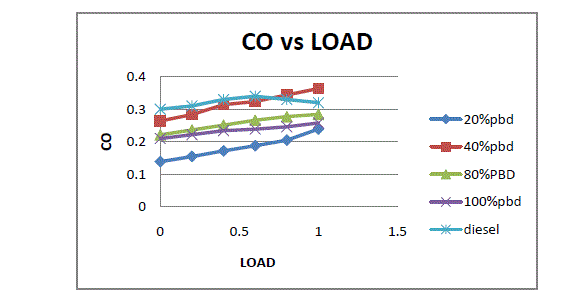 |
| Figure 4.2.2.a |
| Coming to NOx emissions 100%, 20% PBD gives lower emissions compared to diesel and other blends. Finally we
can say that 100%PBD gives best results at 230bar fuel injection pressure in terms of emissions. |
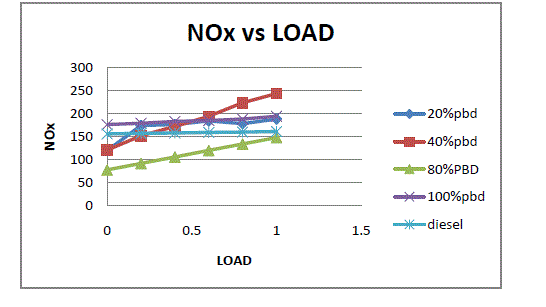 |
| Figure 4.2.2.b |
At 190bar fuel injection pressure |
| The figures below shows the emissions (CO) coming from the engine exhaust with
various blends at various loads and at a fuel injection pressure of 190bar. From the figure4.2.3.a, at 190bar fuel
injection pressure all the blends gives best results in terms of emissions (CO). |
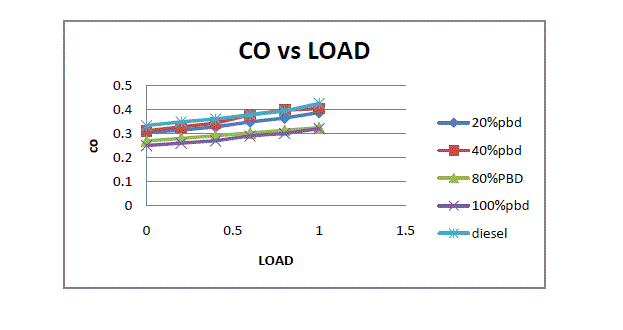 |
| Figure 4.2.3.a |
| Figure 4.2.3.b, at 190bar fuel injection pressure all the blends gives best results in terms of emissions ( NOx).
Finally we found 20%,100% PBD gives lower emissions compared to diesel and others blends. |
| But taking the performance (B.P) into consideration 20% blend gives best results. |
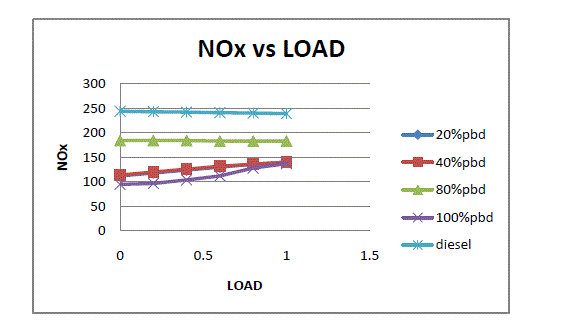 |
| Figure 4.2.3.b |
| From the overall comparisons above, we found three best results both in terms of performance and emissions (by taking
the average of both performance and emissions). Those are |
| • 20% PBD at 210bar, 190bar fuel injection pressures & |
| • 100%PBD at 230bar fuel injection pressure. |
| Now in order to find the one best result we again compare these three with the results of diesel at 210bar (standard
result). |
Best results comparison |
Brake power comparison |
| The figure below shows the brake power produced with various blends at various loads(brake power
produced in best results).From the figure 4.3.1, we can say that 20%PBD at 210bar fuel injection pressure and
100%PBD at 230bar fuel injection pressure gives the best results in terms of performance. |
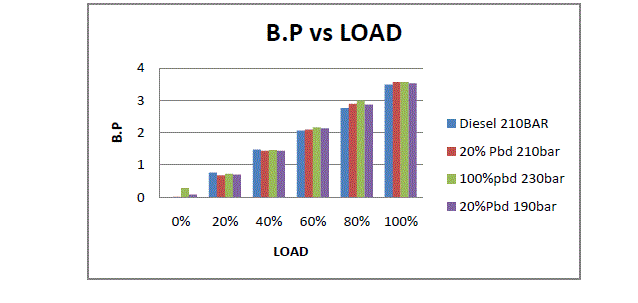 |
| Figure 4.3.1 |
Emission comparison |
| The figures below shows the comparison of emissions (CO and NOx) coming from the engine
exhaust at best results. From the figures 4.3.2.a and 4.23.2.b, 20%PBD at 210bar and 100%PBD at 230bar gives lower
emissions compared to other. |
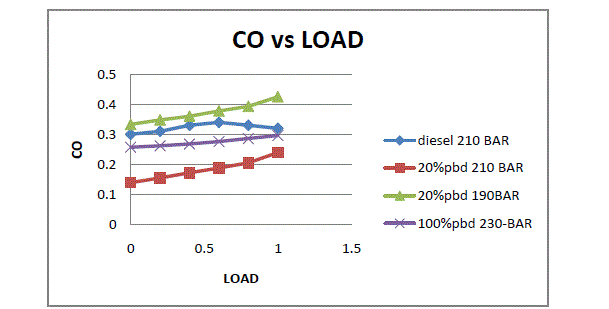 |
| Figure 4.3.2.a |
| From Figure 4.23.2.b, we can say that NOx at 210bar and 100%PBD at 230bar gives lower emissions compared to
other. 20% pbd at 210 bar NOx has lesser emission when compared to 100%pbd at 230 bar |
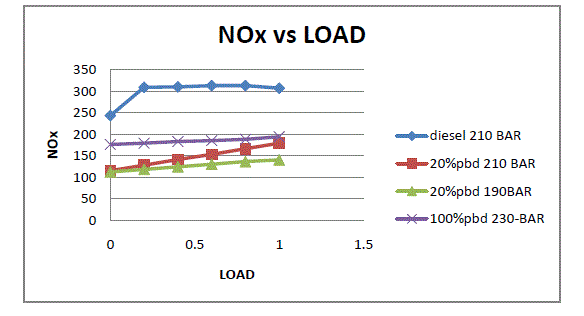 |
| Figure 4.3.2.b |
CONCLUSION |
| • Without engine modifications (i.e. at 210bar standard engine pressure) 20%PBD gives the best results
both in performance and emissions |
| • With engine modifications (i.e. by changing the fuel injector pressure to 230bar) 100% PBD shows the
best results both in performance and emissions. |
Words used: |
| PBD –palm oil biodiesel |
Acknowledgement: |
| We were thankful to AICTE, as this research work was carried out by the experimental setup (Computerize VCR
Engine, Exhaust Gas Analyser & Smoke meter) funded by AICTE under RPS (Research Promotion Scheme)
sanctioned to Dr.M.Muralidhara Rao, Swarnandhra College of Engineering and Technology, Narasapur. |
References |
- JawadNagi, Syed Khaleel Ahmed, FarrukhNagi (2008). “Palm Biodiesel an Alternative Green Renewable Energy for the Energy Demands ofthe Future” ICCBT 2008 - F - (07) – pp79-94, 2008.
- Can Hasimoglu, Murat Ciniviz, Ibrahim Ozsert, YakupIcingur, Adnan Parlak, and M.Sahir Salman. “Performance characteristics of a low heatrejection diesel engine operating with Biodiesel. Renewable energy” 33(2008) 1709-1719, 2008.
- M.Anandan, G.LakshmiNarayanaRao, S. Sampath. “Emission characteristics of a direct injection diesel engine fuelled with plam oil methylester and its blends” International conference on IC engines,Dec 6-9, PP :187-191,2007.
- A.E.Pillay, S.C.Fok, M.Elkadi, S.Stephen, J.Manuel, M.Z.Khan, S.Unnithan. “Engine emissions and performance with alternative Biodiesels”.Vol: 5, No.:4, ISSN 1913-9063 2012.
- T. Hari Prasad, M.MuralidharaRao. “Combustion, performance analysis of diesel engine fuelled with methyl ester of fish oil”, Vol. 2, No.1,and ISSN: 1793-8236, February, 2010.
- R.SamSukumar, M.MuralidharaRao. “Performance of an Automobile by using HHO generator. International conference on engineering andtechnology and management” 18-20-july,2013 Colombo, srilanka.
- JawadNagi, Syed Khaleel Ahmed, FarrukhNagi (2008). “Palm Biodiesel an Alternative Green Renewable Energy for the Energy Demands ofthe Future” ICCBT 2008 - F - (07) – pp79-94,2008.
- K.Venkateswarlu, B.S.R Murthy. “Effect of engine modifications on performance and emission characteristics of Diesel engines withalternative fuels”. Vol.2, Issue 2(2010)69-78,2008.
- M.Ravi1, Dr.A.Aruna kumari2, Dr.K.Vijaya Kumar Reddy. Performance analysis of stationary CI Diesel engine with assorted fuel injectionpressures. Vol. 2, Issue 11,ISSN: 2319-8753, November 2013.
- SukumarPuhan, R. Jegan, K. Balasubbramanian, G. Nagarajan. Effect of injection pressure on performance, emission and combustioncharacteristics of high linolenic linseed oil methyl ester in a Diesel engine. Renewable Energy vol.3,Issue 6, Nov-Dec2013.
- KhiraiyaKrunal B., Dinesh Dabhi K., Nityam P. Oza. A Review of Recent Research on Palm oil Biodiesel as Fuel for CI Engine.Vol:2,Issue:1,I 2278 – 9480 , Jan 2013.
|